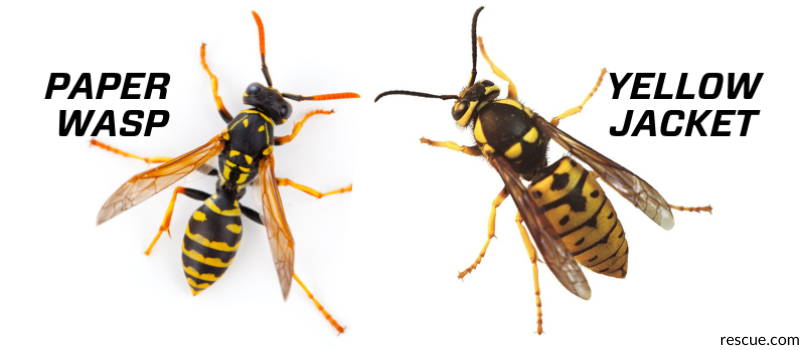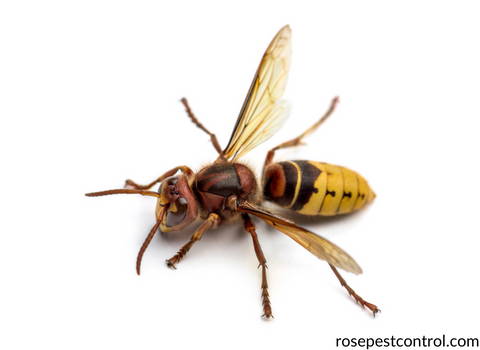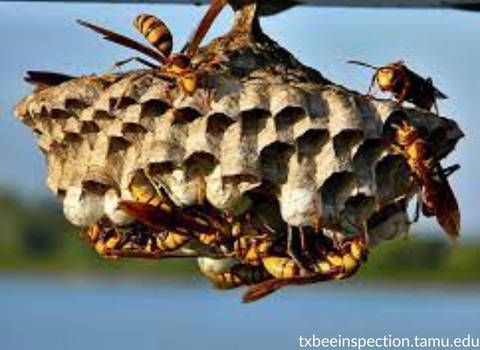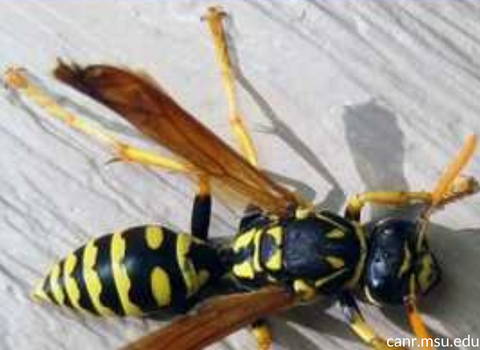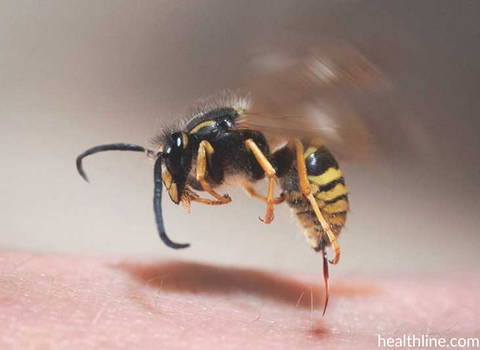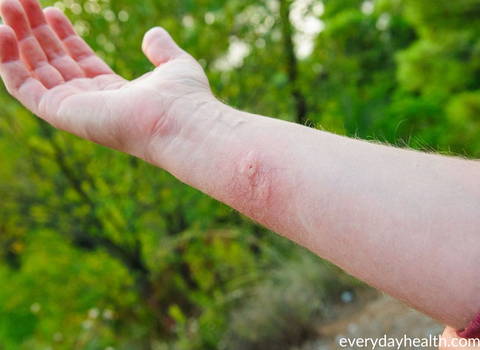Paper Wasp vs Yellow Jacket: Which Insect is Infesting Your Property?
Stinging insects such as yellow jackets, hornets and wasps can be a pain as they usually build nests near dwellings. They can be extremely aggressive when threatened. Their stings and bites are not only painful but can be life-threatening to people allergic to their venom. So, by learning how to tell them apart, you can avoid being attacked by these insects.
Kinds of Wasps
You will find solitary and social wasps. Social wasps like the yellow jacket, paper wasp and hornet live in colonies with a single queen. They usually have narrow wings which fold longitudinally when they are not flying, the ability to bite and sting repeatedly and nests made of recycled wood fibres they chew into a paper-like pulp. Their larvae are reared on living or dead insect prey.
Paper Wasps
Paper wasps have long legs and are about 1" long. Their bodies can be black or reddish-orange with yellow highlights. Paper wasp colonies usually contain less than 100 wasps. Yellow jackets are only about one-half inch long and have yellow markings, which is why they are frequently mistaken for honey bees. Their colonies can hold hundreds of insects.
European Hornets
These hornets are about 1.5-inch long. They have brown bodies with yellow-orange stripes. It’s easy to tell them apart from the bald-faced hornet, which is 3/4" in length and has a black body with gray bands. Hornets have large, enclosed nests that are usually seen hanging from sturdy perches and tree branches. Hornet colonies can hold more than 100 wasps.
Yellow Jackets
Yellow jackets, hornets and paper wasps create new colonies yearly in temperate climates, but only the mated queen will survive winter. The queen emerges during late spring, picks a nest site then builds a nest where the first eggs are laid. In the fall or late summer months, the new queen mates. The old one dies, and the old yellowjacket nests degrade during winter.
Solitary Wasps
Digging wasps and mud daubers are known as solitary wasps as the egg-laying queens occupy and make their own nest. They are not aggressive as well. Solitary wasps will rarely sting and attack even if the nest is disturbed.
Yellow Jackets vs Paper Wasps
Unlike bees, wasps do not have body hair. They also have thinner, elongated, and segmented bodies, two pairs of wings and six legs. But if you want to learn more about the difference between yellow jackets and paper wasps, here is what you need to know about them.
Appearance
Paper wasps have a slim, segmented body, thin waist, and orange-tipped antennae. Yellow jackets, on the other hand, have a thicker and shorter body. They also have black antennae.
Flight
Paper wasps swing their legs whenever they fly, while yellow jackets fold their long legs under their body when they fly.
Behaviour
Paper wasps consume damaged fruits. You can also find them on flowers when they are looking for nectar. While paper wasps also do some pollination, they are not efficient as they do not have a fuzzy body that pollen can stick on. Paper wasps make their nests by scraping wood from structures.
Yellow jackets tend to feed on protein sources like grilled meat. They are picnic pests that love sweet liquids such as juice and soda, so do not be surprised if you find them near human garbage or garbage cans.
Instead of consuming flower nectar and doing some pollination, yellow jackets target other insects. They do not only kill and eat bees, but they also attack hives for honey, larvae, and pollen.
Yellow jacket predation on bees is usually not a major issue because honeybee hives have a strong defence. Worker bees that work as guards fight off yellow jackets with stings. They will also use their body heat to kill individual yellow jackets. They do this by surrounding yellow jackets.
Aggression
Paper wasps are usually docile. They avoid human beings and other animals and rarely sting, but if they do, it is because their nest was disturbed. Paper wasps are capable of stinging repeatedly.
Yellow jackets, on the other hand, are more aggressive compared to paper wasps. These insects will sting to defend yellow jacket nests but may also sting unprovoked. Swarm attacks are also common if their nests are disturbed or threatened.
What Paper Wasp Nests Look Like
Paper wasp nests look like an upside-down umbrella or open honeycomb. These insects usually build their nests on man-made structures like lawn furniture or eaves.
What About the Nest of Yellow Jackets?
Yellow jacket builds underground nests. It has an opening that is usually difficult to see since it is below ground. Many species like the Western yellow jacket build their nest in wall voids, while other wasps will have their nest exposed under eaves.
European Paper Wasps
The European paper wasp is a common kind of paper wasp. European paper wasps have yellow and black bodies. Their body is slenderer and long than yellow jackets. They also have dangling legs and orange-tipped antennae. They sting, so they are usually mistaken for a yellow jacket.
Yellowjackets tend to build an open-cell paper nest under porch decks, barbeque grills and eaves. They are important predators of other insects like caterpillars. They will not attack people unless provoked.
The lures and traps for yellow jackets will not work for hornets, European paper wasps and other bees. Yellow jackets are not just a nuisance. These insects are responsible for at least 90% of bee stings.
How to Avoid Stings
Social wasps will attack if their nests are disturbed since they are aggressive by nature. They are particularly aggressive in late summer because of the peak activity inside the colonies during this time.
They may attack you if you approach their nests. Yellow jackets are also impossible to see by casual detection since they build their nest underground. These insects are a problem around cookouts, fruit trees and picnics they are attracted to sugar.
If you are stung, you should wash the bite site with water and soap to remove the venom. A cold compress can alleviate swelling, particularly for multiple bites or stings, but you will still have red itchy welts. Do not try to remove or destroy any nest if you are allergic to yellow jackets, wasp, or hornet stings. You should call a professional to remove the nest, especially if the nest is quite large.
To avoid stings from wasps or hornets around your property, we recommend that you use these products:


